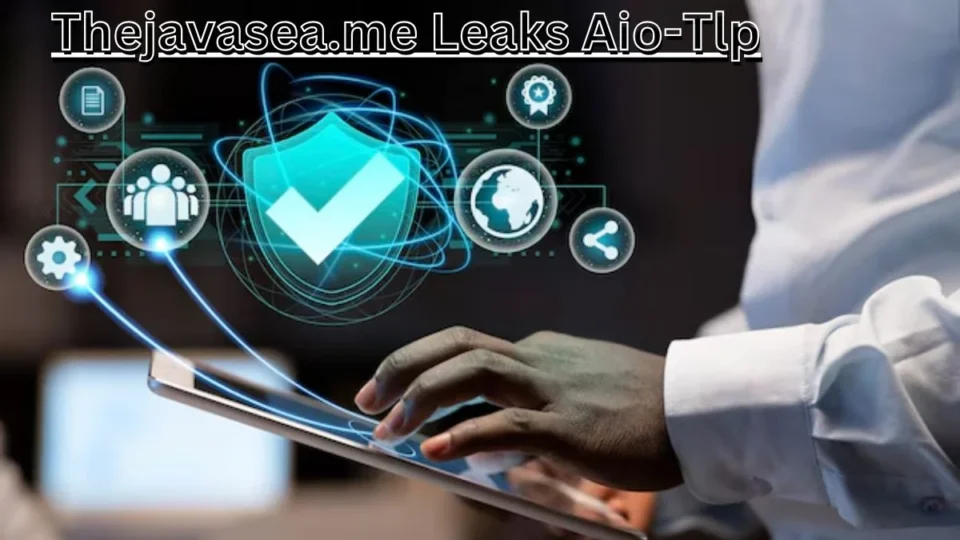In the ever-evolving landscape of online privacy and digital security, the emergence of leaks and unauthorized access to sensitive information is a growing concern. Among the various incidents and breaches that have surfaced, “thejavasea.me” and the “AIO-TLP” leak have gained attention for their implications and the discourse they have generated within the tech community. This article explores the nature of these leaks, their impact, and the broader context in which they occur.
Background: What is “thejavasea.me”?
“thejavasea.me leaks aio-tlp” is a website that has been associated with the leaking of various digital assets and sensitive information. The domain name suggests a connection to Java-related content, which could imply that the leaks involve Java-based applications or software. However, the specifics of the content leaked are not always clear from the domain alone.
The Nature of Leaks
Leaks refer to the unauthorized release of information or data, typically from private or confidential sources. In the context of “thejavasea.me,” these leaks often involve proprietary software, security vulnerabilities, or other sensitive materials. Such leaks can occur due to various reasons, including hacking, insider threats, or mishandling of data.
The “AIO-TLP” Leak: What You Need to Know
The term “AIO-TLP” is associated with a specific leak that emerged from the “thejavasea.me” domain. While details about “AIO-TLP” might vary, it generally refers to a collection of data or software that has been exposed without authorization. The acronym “AIO” typically stands for “All-In-One,” suggesting that the leak might include a comprehensive set of tools or resources.
Content of the Leak
Leaks labeled as “AIO-TLP” usually contain a range of materials, including:
Software Tools:
These might include cracked or pirated versions of commercial software, tools for bypassing software protections, or unauthorized access to premium services.
Security Vulnerabilities:
The leak could include details about security flaws in software applications or systems, which can pose significant risks to users if not addressed.
Sensitive Data:
This might encompass personal information, login credentials, or other private data that has been exposed without consent.
Implications and Risks
The exposure of such content can have serious implications:
Legal Consequences:
Engaging with or distributing leaked content can lead to legal repercussions. The creators or distributors of such content often violate intellectual property laws or other regulations.
Security Risks:
Leaked security vulnerabilities can be exploited by malicious actors to compromise systems, steal data, or disrupt services. Users and organizations affected by these vulnerabilities may face significant security threats.
Privacy Concerns:
The leak of personal data can lead to identity theft, fraud, and other privacy-related issues. Affected individuals may experience significant distress and financial loss.
The Broader Context of Leaks and Security
The Role of Cybersecurity
The issue of leaks underscores the importance of robust cybersecurity measures. Organizations and individuals need to employ best practices to protect their digital assets and data. This includes:
Regular Updates and Patching:
Keeping software and systems updated helps address known vulnerabilities and reduce the risk of exploitation.
Strong Authentication:
Using strong, multi-factor authentication can enhance security and prevent unauthorized access.
Legal and Ethical Considerations
The legal landscape surrounding leaks and unauthorized access is complex. Laws vary by jurisdiction, but many countries have stringent regulations regarding data protection and intellectual property. Engaging with or distributing leaked content can lead to legal action from affected parties.
Ethically, the distribution of leaked content raises questions about privacy, consent, and respect for intellectual property. It is crucial to consider the potential harm that such actions can cause to individuals and organizations.
Response and Mitigation
Addressing Leaks
When a leak occurs, it is essential for affected parties to respond swiftly. This includes:
Identifying the Source:
Understanding how and where the leak occurred helps in addressing the root cause and preventing future incidents.
Notifying Affected Parties:
If personal data is involved, notifying affected individuals and providing guidance on how to mitigate potential risks is crucial.
Implementing Remedial Measures:
Enhancing security protocols and updating systems can help prevent similar incidents in the future.
Community and Industry Response
The tech community often responds to leaks with discussions on best practices and security improvements. Forums, industry groups, and cybersecurity experts play a role in sharing knowledge and strategies for mitigating risks.
Conclusion
The “thejavasea.me” leaks and the “AIO-TLP” incident highlight the ongoing challenges in the realm of digital security and privacy. As technology continues to advance, the risk of leaks and unauthorized access remains a significant concern. Addressing these issues requires a collaborative effort involving robust cybersecurity practices, legal and ethical considerations, and a proactive approach to data protection. By understanding the nature of such leaks and taking appropriate measures, individuals and organizations can better safeguard their digital assets and mitigate the impact of potential breaches.

